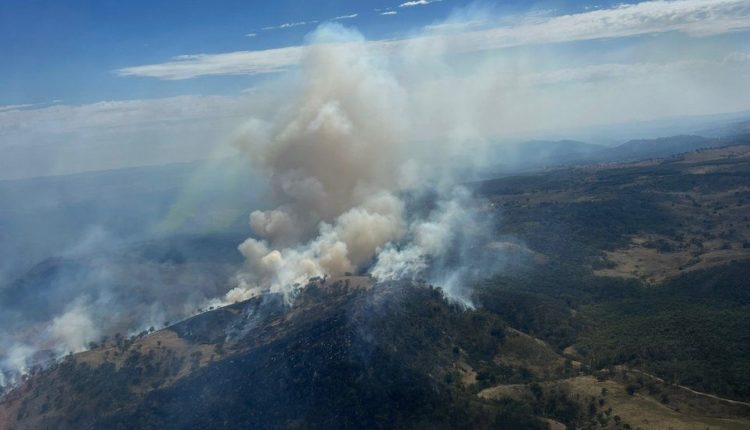Dozens of bushfires burning across Australia’s east coast could get worse as a severe heatwave continues, fire services have warned.
After two years of rains and floods, a return to warmer conditions has sparked New South Wales state’s worst fires since the 2019/2020 “Black Summer”.
A blaze 250km (155 miles) north-west of Sydney triggered the region’s first emergency fire warning in two years.
Firefighters reported battling 10-15m (49ft) high flames.
Residents in affected areas across New South Wales – Australia’s most populous state – have been urged to evacuate, and there are reports of damage to some properties.
Temperatures in some parts of the state also hit 40C (104F) on Monday, for the first time since January 2021.
On Tuesday, 33 fires were still burning across the state, 10 of which were not under control, fire authorities said.
The NSW Rural Fire Service said strong winds had driven the fires’ rapid spread.
“It’s going to be another tough day for firefighters and potentially even into tomorrow before we get some reprieve,” RFS Commissioner Rob Rogers told the Australian Broadcasting Corporation.
Australia’s Bureau of Meteorology (Bom) also warned that dry thunderstorms were possible across eastern NSW, which could spark new fires.
RFS Inspector Ben Shepherd told the BBC a number of other fires in western NSW were “likely to be problematic”.
The hot and dry conditions are expected to last until Wednesday.
Eastern Australia has experienced three consecutive summers of La Niña conditions, with above-average rainfall causing widespread flooding.
In 2022, Sydney recorded its wettest year since records began.
But last week, the Bom said its models suggested La Niña was “likely near its end”, with a return to neutral conditions or even the hot and dry El Niño phenomenon, likely in the southern hemisphere’s autumn.
At least 33 people and an estimated 3 billion animals and birds died in 2019-20 Black Summer fires, one of Australia’s worst-ever natural disasters.
Source: BBC


Comments are closed.